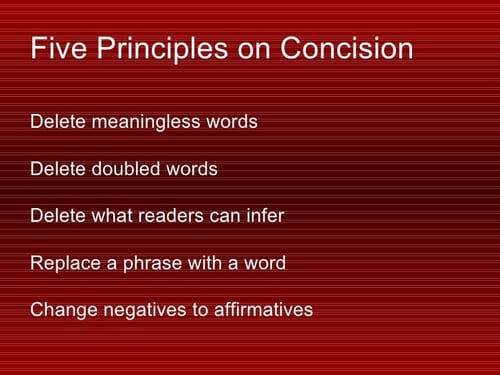A business vision is not just a collection of unique ideas. It's an infectious belief that you instill in your employees and customers. Many successful leaders - Steve Jobs, Bill Gates, Andrew Carnegie - all had groundbreaking visions. They're remembered for their successful products, but before that, they worked hard to persuade others to believe in the dreams they had inside of their heads.
We're publishing a new blog series on how to build and execute a successful vision for your company. In this 1st part of our 5 part series, we will go over the fundamentals of a business vision. First, we'll define 'business vision', then explain how to craft a compelling mission statement and company history.
What is Vision?
According to Merriam-Webster dictionary, the word 'vision' has upwards of ten definitions. Despite all these different meanings, the various usages all center around the act of seeing something. This is why vision, in it's most common usage, is simply defined as "the act or power of seeing."
But take a look at the other definitions. Vision can also be described as "something seen in a dream." Dreams are where our lives mix and mingle with the absurd and the nonsensical. Just how many genius ideas were once dismissed as illogical, improbable, or both?
A business vision invokes both of these definitions. A vision is an evolving dream of your own making. At first, you're the only person who can see your vision. When you convince others to share this dream inside of your head, a business vision is born. Merriam-Webster, we have a new definition:
vision - (business) an evolving dream that you persuade other people to share with you.
Now let's examine two fundamental components of a business vision: the mission statement and the company history. The mission statement is a forward-looking declaration that projects the future trajectory of the company. The company history is a summary of how your business arrived to its current state.

Fundamentals for Business Vision
An Incisive Mission Statement
And so for all of us, as individuals or for our companies, as we’re thinking about developing breakthrough ideas, it’s not that you have to come up with something that the world has never seen before. It’s certainly not that you have to come up with some catchy slogan, and that’s going to solve all your problems.
It is really about understanding in a very thorough way who you are in the world, what you want to express, and how you can give the best of yourself to your customers or the people around you.” - Dorie Clark, Harvard Business Review
A mission statement is the glue that holds your vision together. With its brevity and compression, the mission statement is the most tangible summation of your company's vision. It's a short essay of sorts that should be backed up by the actions you take on a daily, weekly, quarterly, and yearly basis. We'll get to those actions in later posts, but for now, let's focus on writing a mission statement.
There are plenty of companies who let mission statements collect dust on their websites. Some companies even ignore them completely. But don't be one of those guys. It can be a pain to write and update that little essay, but the few hours of work you put into it will give your company a clear sense of direction and shared values.
Perhaps more importantly, the very act of writing the mission statement will allow you to define your company in your own words. When you take stock of the most important aspects of your company, you're giving yourself a chance to contemplate the concrete values your business stands for. This strengthens the business vision inside of your head.
How do you write a strong mission statement? Here are a few tips.
Lofty Ideals
Your mission statement is supposed to be a summation of how your business, in an ideal sense, affects the world. You're striving to create the perfect image of your company. The mission statement is an exercise in setting the bar high.
Don't be afraid to use lofty ideals and language in your mission statement. How does your business operate at its best? Imagine unstoppable success for your business. What would that would look like?
Granted, you shouldn't say your business "changes the history of the aural experience" if you're selling ear wax remover. A better line might be: "Rescues our hearing so we can listen to it all - from the tiniest pin drop to the gnarliest rock concert." The second example sounds more anchored and appropriate. Know where your product stands, in terms of importance, and don't inflate it to a level of unintentional comedy.
Put Your Business in Human Terms
Human beings should remain the focus of your mission statement. Mission statements shouldn't focus on dry statistics, how your company makes money, or the amount of revenue it brings in. Your task is to outline how your product helps people, and how it will continue to help people as the company matures. The mission statement can also discuss how your company has affected your employees' lives.
Remember, the mission statement is a lofty mini-essay. Talking about things like your product strategy isn't conducive to instilling readers with inspirational ideals. Show the humanity of your business. How does your company affect lives on a daily basis?
Dorie Clark, branding expert and Harvard Business Review contributor, sums up what a mission statement should strive for. She says to center on "how you can give the best of yourself to your customers or the people around you." This idea is the cornerstone of all effective mission statements.
Precision and Concision

Mission statements are meant to be short pieces. Anything longer than four paragraphs is really stretching the format. The mission statement demands quality over quantity. The less you say to get your point across, the better. Some mission statements are as short as three sentences.
The language in a mission statement should remain precise but pointed. If you have a wordsmith in the office who can turn eloquent phrases, employ his or her help in writing the final piece. At the very least, get two trusted advisers and one copy editor to read over the final draft before it goes public.
Company History
Like the mission statement, a company history fundamentally orients your business vision. A company history documents the events and ideals that brought your organization to its current state. The piece outlines the trajectory of your company's journey, and gives context to the forward-looking mission statement. Customers can read it for more information on your beginnings; employees can read it acclimate themselves to your company.
People love success stories. Telling the tale of how your company rose is inspiring, and reveals how your vision has thus far led your business to success. Readers will get a better sense of where your vision has taken the company before, and where your vision will take the company in the future.
Here are some tips on how to craft a powerful company history.

Storytelling
Telling a story is the most important aspect of writing a company history. You want your readers to feel as if they've been taken on a short journey. Before writing the piece, sit down and come up with three or four memorable facts about your business. If you started your business in a garage, this is definitely the time to mention your roots.
Take each memorable fact and lay them out on a timeline. Then take the inflection points you picked in the step above and also place them on the timeline. This will give you a solid picture of the chronology of your company history.
Recognizing Your Team
The company history is also a place to recognize how your employees have played a vital role in your success. They were and are the primary recipients of your vision. Your company's success is wholly dependent on how your employees perform. Without telling their story, you cannot truly retell the history of your business.
Highlight the times your employees achieved major milestones. Comment on how your ingenious staff worked hard and solved tough problems. Document the care and dedication it took them to help build your company. It's fine to cite statistics here, if they center around your employees doing helpful things. Make people realize how much you care about your employees and their well-earned contributions.
Forming Your Business Vision
A mission statement and company history are very critical, but they're not enough to build a vision overnight. In our next post, we'll examine the specific actions you can take on a daily basis to realize your business vision for your company.

